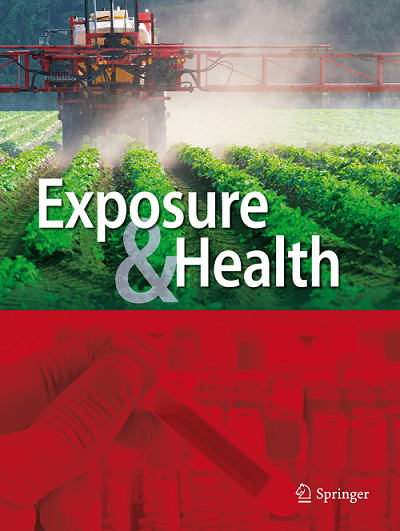The Effects of Soil Microbial Disturbance and Plants on Arsenic Concentrations and Speciation in Soil Water and Soils
IF 4.5
3区 环境科学与生态学
Q1 WATER RESOURCES
引用次数: 0
Abstract
Abstract Arsenic (As) in soils harms soil organisms and plants, and it can enter the human food chain via the dietary consumption of crops. The mobility, bioavailability and toxicity of As are determined by its concentration and speciation. A greenhouse pot experiment was conducted to study the effects of soil microbial disturbance and maize plants on arsenic concentration and speciation in soil (pore) water and soils. Three soil treatments with varying microbial disturbance were designed for this experiment: native soil, sterilized soil and sterilized soil reconditioned with soil indigenous microbes. The three soil treatments were intersected with three levels of As in soils (0, 100 and 200 mg kg −1 spiked As). Ten pots of each treatment were planted with maize, while three pots were filled with soil without maize. The difference between native and reconditioned soil indicated the abiotic sterilization effect (artifact of the sterilization process), while the difference between sterilized and reconditioned soil showed the microbial disturbance effect. Both effects increased As release into soil water. The microbial disturbance effect was more pronounced for organic As species, showing the influence of soil microbes involved in As methylation. The abiotic sterilization effect was more evident in unplanted pots than planted pots and the microbial disturbance effect was observed only in unplanted pots, suggesting that both effects were mitigated by the presence of maize.土壤微生物干扰和植物对土壤中砷浓度和形态的影响
摘要土壤中的砷危害土壤生物和植物,并可通过食用作物进入人类食物链。砷的迁移率、生物利用度和毒性是由其浓度和形态决定的。通过温室盆栽试验,研究了土壤微生物干扰和玉米种植对土壤(孔隙)水和土壤中砷浓度和形态的影响。本试验设计了三种不同微生物干扰条件下的土壤处理:原生土壤、灭菌土壤和土壤原生微生物修复的灭菌土壤。三种土壤处理的土壤中砷含量分别为0、100和200 mg kg−1。每种处理10盆种植玉米,3盆不种植玉米。原生土壤与修复土壤的差异表现为非生物灭菌效应(灭菌过程的人工产物),而灭菌土壤与修复土壤的差异表现为微生物扰动效应。这两种作用都增加了砷向土壤水中的释放。微生物对有机砷的干扰作用更为明显,说明土壤微生物参与了砷甲基化。非生物杀菌效果在未种植的盆栽中比在种植的盆栽中更明显,微生物干扰效应仅在未种植的盆栽中观察到,这表明玉米的存在减轻了这两种效应。
本文章由计算机程序翻译,如有差异,请以英文原文为准。
求助全文
约1分钟内获得全文
求助全文
来源期刊

Exposure and Health
Environmental Science-Pollution
CiteScore
13.80
自引率
9.00%
发文量
71
期刊介绍:
It is a multidisciplinary journal focused on global human health consequences of exposure to water pollution in natural and engineered environments. The journal provides a unique platform for scientists in this field to exchange ideas and share information on research for the solution of health effects of exposure to water pollution.
Coverage encompasses Engineering sciences; Biogeochemical sciences; Health sciences; Exposure analysis and Epidemiology; Social sciences and public policy; Mathematical, numerical and statistical methods; Experimental, data collection and data analysis methods and more.
Research topics include local, regional and global water pollution, exposure and health problems; health risk analysis of water pollution, methods of quantification and analysis of risk under uncertainty; aquatic biogeochemical processes in natural and engineered systems and health effects; analysis of pollution, exposure and health data; and more.
 求助内容:
求助内容: 应助结果提醒方式:
应助结果提醒方式:


